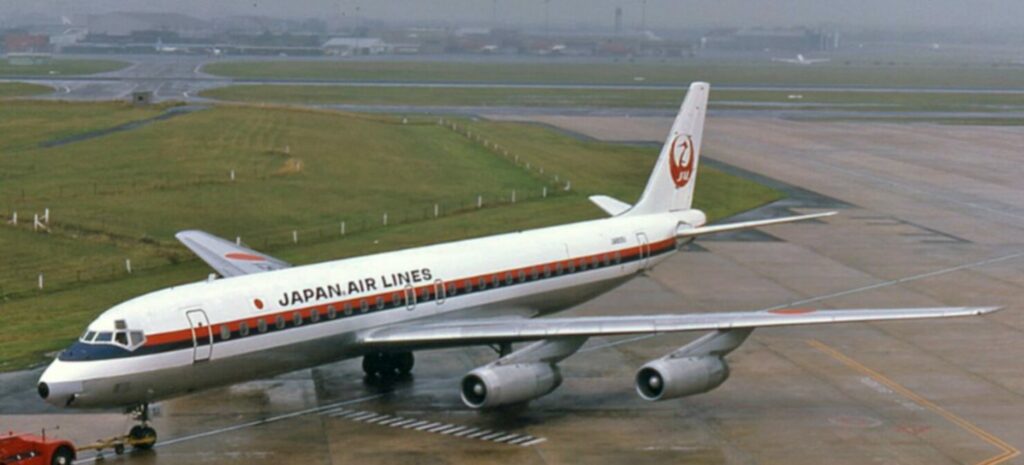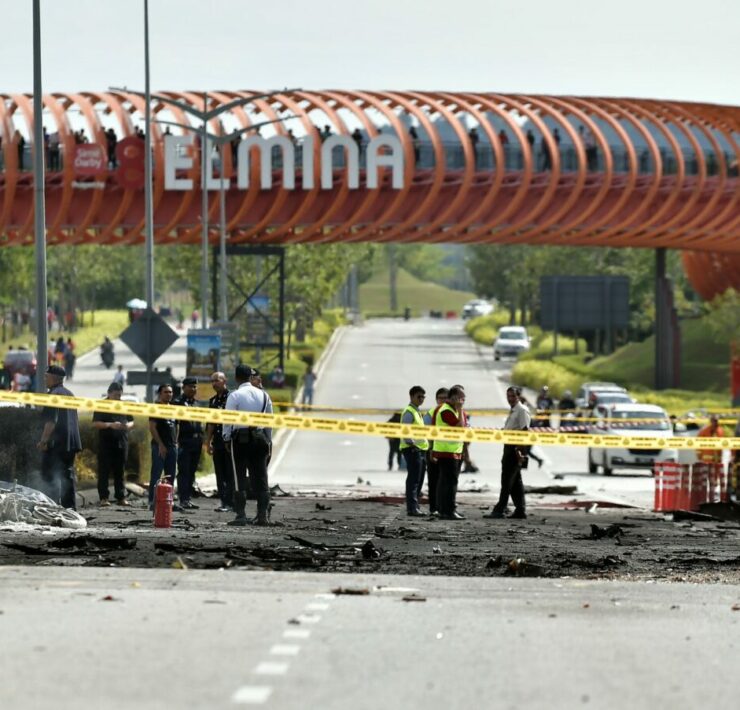Not The First Crash For Elmina – Second Since 1977
Bandar Elmina previously also saw the crash of Japanese Airlines Flight 715 in 1977.

Subscribe to our FREE Newsletter or Telegram channel for the latest stories and updates.
Yesterday’s unfortunate aircraft crash was not the first to have occurred at Bandar Elmina, Shah Alam. Elmina had previously seen the air crash of Japanese Airlines Flight 715 that took place on 27 September 1977.
The plane crashed on approach at the Sultan Abdul Aziz Shah Airport (Subang Airport), killing 34 people, including 26 passengers and eight crew members.
It was reported that the plane crashed into a hill during a thunderstorm at the Elmina Estate, back when it was a rubber plantation in the 1970s.

The McDonnell Douglas DC-8 aircraft was due for a stopover at the Sultan Abdul Aziz Shah Airport in Subang before heading to Singapore. It had 69 passengers and 10 crew members on board. Out of the 69 passengers, 29 were Japanese.
Hence, the plane had earlier departed from Haneda Airport in Tokyo and flew to Changi International Airport in Singapore. And it went through a stopover at the Kai Tak Airport in Hong Kong.
Two hours into the flight, air traffic control at Sultan Abdul Aziz Shah Airport then told the 715 flight to approach and land on runway 15. The flight crew began their approach, putting the landing gear down and extending the flaps.
The plane descended below the minimum descent altitude of 750 feet. And at 300 feet, it, unfortunately, crashed four miles from the airport and broke on impact, with no fire.

According to the reports by the Civil Aviation Department (DCA), it stated that the airport’s weather was poor and the aircraft was using a very high-frequency omnidirectional range radio navigation system for aircraft approach.
“The investigation determined that the cause of the accident was the captain descending below the minimum descent altitude without having the runway in sight, and continuing the descent, causing the aircraft to crash before reaching the airport.
“The flight crew’s loss of sight of the airport was due to bad weather, which also contributed to the accident. The first officer did not challenge the captain for violating the regulations,” said the DCA in their statement.
The crash was deemed the second-deadliest aviation disaster to have happened in Malaysia at that time. Two months later, however, another crash occurred – the Malaysian Airline System Flight 653 which was responsible for 100 deaths.
It was purportedly hijacked before it crashed in Tanjung Kupang, Johor, which ended in the death of 93 passengers and 7 crew members
Share your thoughts with us via TRP’s Facebook, Twitter, Instagram, or Threads.





